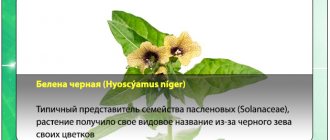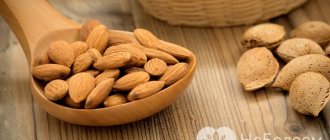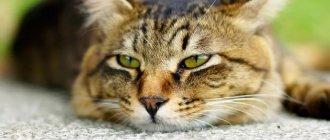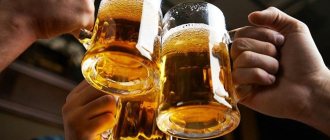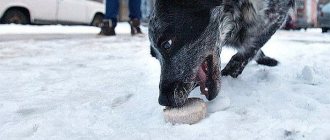Belladonna, belladonna, mad cherry - all these are names of the same unique plant, which has both healing and poisonous properties. Belladonna (wiki) means "beautiful woman" in Italian. This is due to the use of the plant in ancient times for cosmetic purposes. Ladies rubbed flowers and leaves on their cheeks to give their faces a spectacular blush, and dropped the juice into their eyes. At the same time, the pupils dilated and shone beautifully. But it is easy to get poisoned if you come into contact with belladonna , so such makeup products are a thing of the past. However, the plant is used in both folk and official medicine.
Where is belladonna used?
Belladonna is widely used in official and folk medicine. Today, this plant is included in many medications aimed at treating diseases of the liver, gastrointestinal tract, and tumors. Belladonna helps cope well with excess sweating and salivation, which makes it possible, if necessary, to use it for hypersecretion of the salivary and sweat glands. With its help, it is also possible to normalize the peristalsis of the pathways that remove bile and urine.
Belladonna, although rarely, is used in perfumery. The juice of its leaves is used in cosmetology as a means of combating age spots.
Sleepy stupor can act as an antidote for poisoning with certain types of berries and mushrooms!
Usage
In ancient sources, the use of belladonna in medicine is rarely mentioned, since its poisonous properties are known. Belladonna is mentioned as a medicinal plant in De Materia Medica, written by Dioscorides (circa 40-90 AD).
Only the authors of medieval herbalists spoke in detail about this medicinal plant.
Belladonna is mentioned in Fox's herbalism, published in the second half of the 15th century. But even earlier, people began to use this plant as a source of poison.
It was used to make an ointment that was used during witch trials. When rubbed, the active substances entered the blood, which caused hallucinations, and victims under torture said everything that was required of them.
Love potions were also made from belladonna. K. Baugin’s herbal book (Basel, 1596) mentions that chopped and applied belladonna herb treats all ulcers and tumors, inflamed stomach and liver, while quenching fever.
Modern folk medicine refuses to use such a dangerous medicinal plant, but previously belladonna extracts with wine and juices were taken both internally and as an external remedy for pain of various origins.
Preparations made from belladonna extract are used in the study of fundus vessels, inflammatory diseases of the gastric mucosa, bronchial asthma, treatment of gastritis and kidney stones.
pharmachologic effect
The pharmacological properties of belladonna coincide mainly with the properties of atropine.
Belladonna preparations interfere with the stimulating effect of acetylcholine, reduce the secretion of the salivary, gastric, bronchial, lacrimal, sweat glands, and the exocrine function of the pancreas.
They reduce the tone of the muscles of the gastrointestinal tract, bile ducts and gallbladder, but increase the tone of the sphincters. Cause tachycardia, improve atrioventricular conduction.
They dilate the pupils, impede the outflow of intraocular fluid, increase intraocular pressure, and cause paralysis of accommodation.
Indications
Belladonna preparations are used for gastric and duodenal ulcers, cholelithiasis, spasms of smooth muscles of the abdominal organs, biliary and renal colic, bradycardia, atrioventricular block, hemorrhoids, anal fissures.
Medicines containing belladonna are contraindicated in case of hypersensitivity to their components, angle-closure glaucoma, prostatic hypertrophy with impaired urine outflow.
During the treatment period, care must be taken when driving vehicles and engaging in other potentially hazardous activities that require increased concentration, speed of psychomotor reactions and good vision.
As a side effect and in case of overdose, psychomotor agitation, dry mouth, mydriasis, accommodation paresis, intestinal atony, dizziness, tachycardia, urinary retention, hyperemia of the eyelid skin, and photophobia are observed.
Dosage forms
Used in the following dosage forms:
- Plant raw materials: thick extract (Extractum Belladonnae spissum) - a thick mass of dark brown color, a peculiar odor, contains from 1.4 to 1.6% alkaloids. dry extract (Extractum Belladonnae siccum) is a brown or light brown powder with a faint odor, a peculiar taste, hygroscopic, containing 0.7-0.8% alkaloids. Due to the lower content of alkaloids in the manufacture of dosage forms, the dry extract is used in double quantities in relation to the thick extract.
- Tincture (Tinctura Belladonnae) is a transparent liquid of greenish or reddish-brown color with a peculiar odor and bitter taste. Prepared from belladonna leaves (1:10) in 40% alcohol; contains 0.027-0.033% alkaloids.
- Rectal suppositories with a dosage of 15 mg.
Belladonna preparations are also included in Zelenin drops and many other combination medications.
Medicines are made from belladonna: atropine sulfate, leaf powder, corbella (tablets), root decoction and sucradbel. In addition, belladonna is part of a number of complex preparations.
Medicinal raw materials
Belladonna leaf, herb and root (lat. Folium, Herba, Radix Belladonnae) are used as medicinal raw materials.
Raw materials are collected mainly from plantations: leaves are harvested in the flowering phase, grass - in the fruiting phase; dry quickly at a temperature of 45-50 ° C.
With proper and quick drying, the raw material retains its green color and almost does not lose alkaloids. Belladonna roots are usually collected when liquidating plantations.
They are plowed up in the fall, washed, and cleaned of the remains of above-ground organs; cut lengthwise into pieces and then dried. The yield of dry leaves is 8-10 c/ha, grass - 12-15 c/ha.
The total amount of alkaloids in dry belladonna raw materials, according to the requirements of the VIII edition of the State Pharmacopoeia of the USSR, must be at least 0.35% in the leaves, at least 0.35% in the grass, and at least 0.5% in the roots.
What is the danger
Belladonna juice contains atropine, a substance that, when overdosed, exhibits its toxic properties. Atropine belongs to the group of M-anticholinergics and has a depressing effect on the parasympathetic nervous system.
It is important to remember that atropine is found in all parts of the plant, but its concentration reaches its maximum in belladonna berries. For example, it is enough for a child to eat 2-3 fruits for symptoms of atropine intoxication to appear, and for an adult 12-15 berries will be enough.
Not only berries, but also preparations made with belladonna are dangerous. When they overdose, the same symptoms appear as when eating the fruits of the plant.
Botanical description
Photo:
Perennial herbaceous plant. In the first year of life, a vertical, taproot, branched root and a slightly branched stem develop, reaching a height of 60-90 cm.
From the second year of life, a thickened rhizome with numerous large branched roots develops.
The stems are tall, straight, branched, thick, indistinct, succulent, green or dark purple, up to 200 cm in height, densely glandular in the upper part.
The leaves are petiolate, the lower ones are alternate, the upper ones are in pairs, almost oppositely close together (and always one is significantly, three to four times larger than the others), dense, up to 20 cm long and up to 10 cm wide, dark green.
The leaf blade is elliptical, ovate or oblong-ovate in shape, pointed at the top, entire, tapering towards the base into a short petiole.
The color of the leaves is green or brownish-green above, lighter below.
The flowers are five-membered, single or paired, medium-sized, drooping, emerging from the axils of the upper leaves on short glandular-pubescent pedicels, bell-shaped, regular, with a double perianth.
The calyx remaining with the fruit is five-incised, with ovoid, long-pointed lobes.
The corolla is cylindrical-bell-shaped, five-lobed, 20-30 mm long, dirty purple (sometimes yellow) in color, yellow-brown at the base, with brown-violet veins.
There are five stamens; pistil with a superior ovary, a purple style equal to or slightly longer than the corolla, and a reniform stigma. Blooms from May until late autumn.
The fruit is a bilocular, slightly flattened, shiny purple-black (sometimes yellow) berry with many seeds in blue-violet juice; resembles small cherries, sweetish in taste.
The seeds are kidney-shaped or slightly angular, brown, with a cellular surface, 1.5-2 mm in length. Weight of 1000 seeds is 0.6-1.36 g. The fruits ripen from July until the end of the growing season.
How does poisoning occur?
Belladonna poisoning most often occurs for the following reasons:
- a child or an adult, attracted by the beautiful appearance of the fruits, eats them, unaware of the danger that lies in the berries;
- the patient neglects the recommendations regarding the dosage of the drug, which includes belladonna extract or atropine in its pure form;
- a doctor using traditional medicine recipes or the patient himself is trying to make a medicine using a homemade method.
It is important to understand that belladonna intoxication can occur not only when eating parts of the plant or its extract. People often get poisoned without washing their hands properly after handling raw materials. For signs of belladonna poisoning to appear, touching the mucous membranes of the nose, eyes, and mouth with dirty hands is enough.
Have you taken belladonna-based medications?
History of the origin of the name belladonna
The name of the plant from Latin sounds like “atropa Belladonna l”. The first word is the name of one of the goddesses of Fate, who is known from the myths of Ancient Greece for cutting the life threads of people.
This name is explained by the fact that the culture has strong poisonous properties. "Belladonna l" translates to "beautiful woman." This name was given to the plant because it had the properties of making women more beautiful: the juice was dripped into the eyes, due to which the pupils dilated, a shine appeared, and applied to the skin to create a blush.
The first mention of the plant dates back to the third century BC in the works of Theophrastus, who described both the poisonous and beneficial properties of the crop. It is known that the juice of the plant was used by ancient warriors: they took drinks, adding belladonna extract to them, which gave them strength and caused excitement, thanks to which they fearlessly fought their enemies.
In the Middle Ages, the culture was more often used to create dangerous poison. So, with the help of the juice of the plant, the Scots were able to defeat the Danes: they simulated their departure, leaving abandoned barrels of beer on the field, to which they added a little belladonna.
When the Danes thought they had won, they drank the drink that was left and fell fast asleep. Thanks to this, the Scots were able to quickly deal with them.
In ancient times, belladonna was often attributed magical properties, since this plant causes hallucinations. So, potions and ointments were made from the leaves; they were used by women who considered themselves witches.
The results were not long in coming: after using the decoctions, a feeling of flight was created and visions appeared.
In the Middle Ages, the culture was more often used to create dangerous poison
Symptoms
Symptoms of belladonna poisoning are similar to those of atropine intoxication. The following come to the fore:
- dry mucous membranes, including xerophthalmia (dry eyes);
- mydriasis (pupil dilation);
- the appearance of photophobia, deterioration in focusing on near objects (farsightedness), blurred vision;
- pronounced thirst;
- hoarseness of voice up to its complete loss;
- feeling of a lump in the throat with impaired swallowing reflex (dysphagia);
- dry skin;
- hypertension (jump in blood pressure);
- tides;
- attacks of tachycardia up to arrhythmia;
- temperature jumps;
- urinary retention.
The clinical picture of belladonna poisoning may vary. With mild intoxication, the main symptoms disappear after 7-10 hours. After the main symptoms disappear, the person feels exhausted and falls asleep. With severe intoxication, the development of toxic psychosis is possible, which indicates the involvement of the central nervous system. The onset of toxic psychosis is indicated by the following symptoms:
- irritability to the point of aggression;
- disorientation, lack of coordination;
- hallucinations;
- delirium;
- manic syndrome;
- attacks of motor and emotional excitement.
Poisoning with belladonna preparations or the plant itself is life-threatening!
Useful qualities
Its properties are due to the content of alkaloids in it - atropine, atropamine, hyoscyamine, which have a wide spectrum of action. The herb has the following effects on the human body:
- bronchodilator;
- analgesic;
- antispasmodic;
- stimulating for the heart;
- normalizing the functioning of the gastrointestinal tract and urinary system.
But since the plant extract is very poisonous, it should be taken only according to the permissible dosage. Any excess may lead to difficulty or cessation of breathing.
How to give first aid
First aid if symptoms of belladonna poisoning occur include the following:
- induce vomiting by drinking plenty of fluids and then pressing on the root of the tongue (you can use a weak solution of manganese, weak tea, salt solution or, as a last resort, 4-6 glasses of plain water at room temperature);
- take activated carbon or another enterosorbent (it is recommended to crush activated carbon tablets and add them to a glass of water, and then drink);
- Corvalol or Valocordin will help relieve severe agitation in the patient;
- in case of severe fever, the patient is wiped with a wet cloth and a damp, cold towel is placed on the head.
First aid is provided after a doctor is called; calling a specialist in case of belladonna poisoning is mandatory!
Treatment of Parkinson's disease
Prepare a belladonna decoction using the following technology:
- Mix dried and crushed belladonna leaves (30 g) with activated carbon (100 g).
- Pour the mixture with dry white wine (750 ml) and put on fire.
- Cook for 10 minutes and then remove from the stove.
- Strain the finished broth.
Take this brew three times before meals daily, 1 tsp. The course of treatment is three days. When three hours have passed after taking the decoction, eat a pinch of nutmeg or chew calamus root a little.
When do you need a doctor?
Medical assistance when symptoms of belladonna poisoning appear is mandatory. Only a doctor can assess the patient’s condition and make sure that his life is not in danger.
In a hospital setting, a person can undergo gastric lavage again using a special tube, an antidote will be administered, and agitation and respiratory failure will be eliminated. Treatment is mainly symptomatic, aimed at maintaining the patient’s life until atropine is removed from the bloodstream.
The greatest danger to the patient's life is disturbances in heart rhythm and breathing. If the patient cannot breathe on his own, ventilators may be used. In case of cardiac arrest, cardiac resuscitation may be used.
Varieties
In its wild form, belladonna is distributed in Western and Southern Europe, on the Atlantic coast and in the Mediterranean, in the Balkans, and in Asia Minor. Found from Great Britain to the Eastern Carpathians, from Spain, Yugoslavia, Greece, Romania in the south to Denmark in the north. In addition to Europe, belladonna grows in the Caucasus, Iran, Afghanistan, Pakistan (up to the Himalayas), North Africa, and is introduced into the USA. In Ukraine, it grows wild mainly in the Carpathians (Transcarpathian region), sporadically in the Carpathian region. It grows in small groups in beech forests, in clearings, lawns, clearings, edges, along river banks, among bushes at an altitude of 300 to 1000 m above sea level. Belladonna is also found in the forests of the Podolsk Upland of the Crimean Mountains. The plant is listed in the Red Book of Ukraine.
Possible complications
Atropine intoxication of mild to moderate severity usually ends with full restoration of health after 1-2 weeks. The main thing is to provide first aid in a timely manner and call a doctor who will monitor the patient’s condition and relieve the symptoms of poisoning.
Severe intoxication poses a serious threat to life. Without medical care, the patient may die due to paralysis of the respiratory muscles or cardiac arrest. As a result of severe poisoning, chronic heart failure may develop.
Chemical composition
The aerial part contains flavonoids and oxycoumarins. All parts of the plant are poisonous and contain atropine group alkaloids: roots up to 1.3%, leaves up to 1.2%, stems up to 0.65%, flowers up to 0.6%, mature fruits up to 0.7%.
Atropine can cause severe poisoning. Belladonna, in addition to atropine, also contains hyoscyamine and hyoscine (scopolamine), apoatropine (atropamine), belladonna.
Cushygrin was found in the roots. The leaves and roots contain scopoletin.
The maximum content of alkaloids was found in the leaves in the budding and flowering phases, in the whole plant - in the phase of the beginning of seed formation, and in the roots - at the end of the growing season.
Preventive actions
Prevention of belladonna poisoning consists, first of all, in carefully following the instructions for medications containing belladonna extract. You should not overdose and try to prepare medicines using this plant at home.
In nature, it is prohibited to eat the berries of unfamiliar plants. Small children outdoors should be supervised so that they do not accidentally eat poisonous berries. Prevention may also involve introducing children of a conscious age to the plant and explaining why it should not be eaten.
Belladonna is one of the most poisonous plants that grows freely in Russia. At the first symptoms indicating intoxication due to contact with belladonna, you should seek medical help. Even if the poisoning seems mild, consultation with a specialist is still necessary, since the patient’s condition can quickly change for the worse.
Consequences and prevention
Mild Belladonna poisoning does not leave serious consequences for the body. With timely assistance, restoration of the functions of organs and systems occurs within 1-2 weeks. Serious consequences for the body can occur if there is severe poisoning or refusal of treatment.
Results of poisoning:
- Exacerbation of chronic diseases of the digestive system;
- Visual impairment;
- Nervous instability of a person.
The most dangerous negative reaction may be respiratory arrest or cardiovascular failure, as a result of which there is a high probability of death. To avoid such situations, it is important to know and follow precautions when collecting and storing wild plants.
Recommendations:
- Collect wild herbs while wearing protective equipment;
- Do not prepare or consume home-made medicines;
- Introduce children to poisonous plants, explain the need to follow safety precautions;
- Eliminate thickets of poisonous grasses near playgrounds and institutions;
- Do not take medications containing Belladonna without following the instructions and consulting a doctor.

